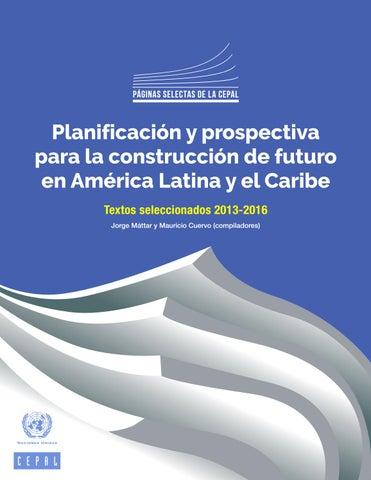26
06/2022
If humanity must have a future in spatial colonization, a factor will be indispensable to allow their survival and expansion: the ability to reproduce humans in space.
It is a matter that is known very little and that little has been investigated so far.
But, as commented on axios, it is a crucial issue that will largely define the possibilities of humanity to go beyond the earth and establish colonies in space or other planets.
All this has scientific, medical, ethical, psychological, social and emotional implications, just by mentioning some of its dimensions, which have barely begun to be considered.
In this regard, Axios cites Gary Strangman, from the Transnational Space Health Institute (known as Trish in English), who points out that 20 years have passed since the most recent systematic experiments on reproduction and development of vertebrates in the space were carried out in spaceand considers that the reproductive issue would be an important issue in a future expedition to Mars.
"Reproduction will be very surely relevant in a three -year mission to Mars. And we do not want to discover serious adverse effects by accident," Strangman told Axios.
The question of reproduction in space includes but goes far beyond the mere issue of sex, and to understand more the implications linked to the complete process, from the preservation of reproductive sex cells to the pregnancy, birth and raising of a babyOutside the earth, a lot of research, resources and time are still needed.But it is something that has not been dedicated so far enough attention, says Axios.
Strangman adds in this regard that "the risks of space flight are (reasonably) well understood but the consequences of these risks in conception, gestation, birth and development are barely understood in any species but particularly in mammals and even less in humans".

Even the study of menstruation and ovulation cycles in women in space, indicates axios, has not been done sufficiently because, among other things, women have been a minor fraction of astronauts.
However, research on mammalian reproduction has been done under conditions linked to space, although not necessarily in it.
For example, NASA has studied mice that have been submitted to conditions that simulate a different force of gravity to Earth, whether less such as orbital or greater stations, as on planets greater than ours, to seeHow that affects its possibilities of conception, gestation and lighting.
Reproduction was possible in the cases of these mice, but with greater difficulties.
Este contenido no está disponible debido a tus preferencias de privacidad.Actualiza tu configuración aquí para verlo.In addition, Axios indicates, it has been proven that sperm and mouse embryos do not suffer effects on radiation levels on board the International Space Station, although that could be different in interplanetary travel conditions such as Mars's exploration.
As Reuters reported, mouse sperm that was taken dry to the space station and then brought back to the earth was successfully rehydrated and used to fertilize females ovules and give birth to new mice.
Ethical issues, indicates axios, prevent this kind of studies in humans but, in any case, much is what should be experienced in mammals before having a broader vision of the phenomenon and, where appropriate, evaluating what can be doneIn relation to human reproduction.
For example, Teruhiko Wakayama, dedicated to studying the subject, told Axios that in itself the reproduction of mammals is complicated and affected by multiple factors even on Earth, so it could be assumed that performing it in space could have additional complications.
But to begin to understand this, Wakayama said, for example, missions to take dry frozen sperm to a station that orbite the moon to analyze the impact of radiation on those cells and conduct studies in tardigrades (microscopic animals) forSee how they reproduce in space.
It has also been proposed to take mice to the space station to directly study its possibilities and reproductive abilities.
All these studies are still in process or will take years to be carried out and are just first steps in the subject of human reproduction in space.
Although there are those who believe that, perhaps, the desire will be stronger than the scientific method and perhaps in the future an astronaut couple will intertwine in orbit or mart and engendered unforeseen the first space baby, with all the uncertainty, risk and risk andwonder that implies.
IT MAY INTEREST YOU
In video: They discover on the Milky Way a powerful brilliant object ever seen

- 1033
- What is good sperm for women's health?
Related Articles
How many sit-ups should I do a day to get rid of my belly?
30/01/2022Flattening the abdomen or reducing the fat in this area is a difficult task. But don't despair, we will solve the question: how many sit-ups should I do a day to eliminate the belly. Abdominal fat...
Jalisco The Ministry of Health invites men and women to learn about family planning services
04/02/2022The Jalisco Ministry of Health invites men and women of reproductive age to learn about and use the various services offered by the Family Planning and Contraception Program, which...
Telva International day against gender violence: screens multiply mistreatment against women
01/02/2022SaludUpdated Change of scenery, same victims. On the International Day for the Elimination of Violence against Women, we highlight how aggressions have been copied to the digital sphere, increasing...
Coronavirus Spain today | | Health The Trust Project
18/03/2022The Ministry of Health has reported 3,261 new coronavirus infections and 155 deaths, while the cumulative incidence drops more than six points in 24 hours to 109.3 cases. There is...